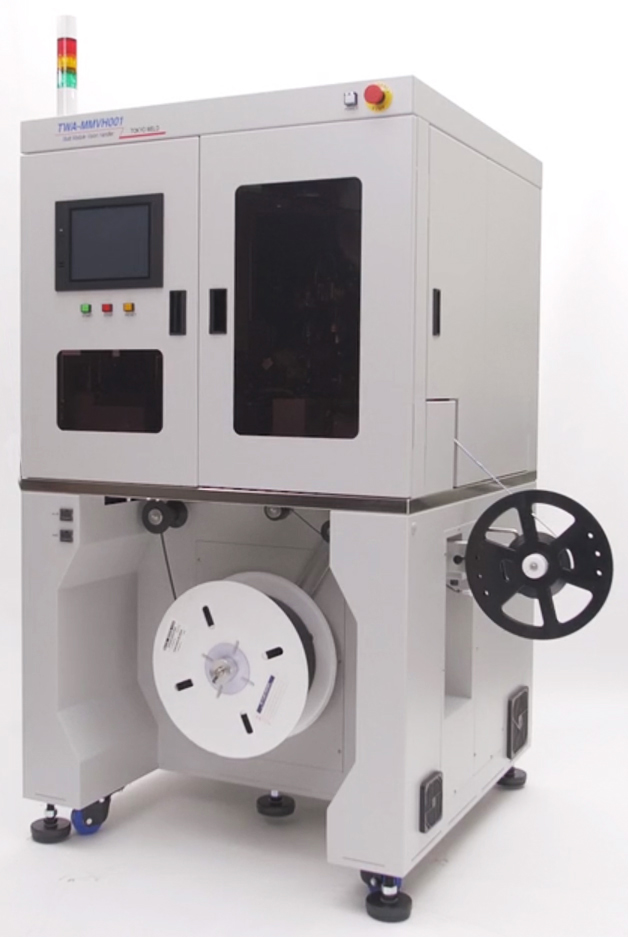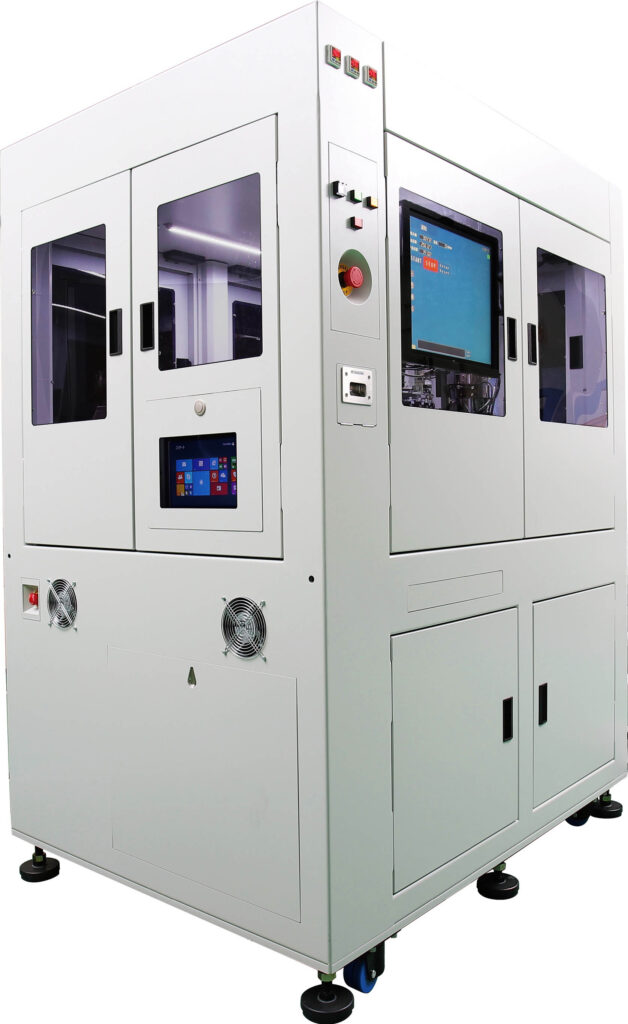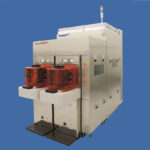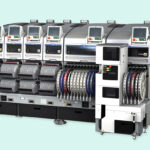ASIA ELECTRONICS INDUSTRYYOUR WINDOW TO SMART MANUFACTURING
Tokyo Weld's AOI Taps AI, Boosts Inspection System
Tokyo Weld Co., Ltd. manufactures terminal coating machines, testing and sorting machines, and taping machines. These suit discrete semiconductors, such as diodes, transistors, and light-emitting diodes (LEDs) and passive electronic components, such as inductors, capacitors, and resistors.
The company has also been expanding its automated optical inspection (AOI) systems business, which it positions as its third pillar.
The company heightens its business by offering the MMxH Series, which applies image processing and transfer technologies. The series meets robust demand for inspections for components for automotive applications, which have been requiring ultraminiature electronic components.
In addition, the company has also advanced the market release of TWA-4101/4102, the main models of the company’s AOI systems and come with artificial intelligence (AI).

Reduces Overkill Ratio
The TWA-410x Series AOI systems inspect the quality of capacitors, inductors, diodes, and other components. They make the most of imaging technology the company has accumulated in the production of measuring and sorting machines. As six-sided optical inspection systems for multilayer ceramic capacitors, the company has already shipped many units of the Series. Tokyo Weld considers the series as a business pillar, following taping machines, testing and sorting machines, and terminal coating machines.
In recent years, the company has been advancing the commercialization of hybrid inspection systems by incorporating AI inspection algorithm in the existing inspection algorithm. Hybrid inspection systems will simplify the creation of inspection algorithms, which conventionally required advanced expertise and long period of experience. It will also reduce the overkill ratio, which simply means lower defects due to improved inspection precision.

Flexible Modules
The MMxH Series suits inspection of odd-formed components and medium and larger devices and components. Because the constituting units of each section are modular, this machine flexibly meets inspection needs of electronic components with various sizes and shapes by changing the construction of modules.
For example, operators can choose the component supply section from the sheet supply, parts feeder supply, and tray supply, by changing units. Likewise, with respect to discharging, it is possible to discharge components to several types of BINS, arrayed in a tray, or adhered into a sheet or taped by changing modules.
The MMxH adopts nozzle transfer at the center of transfer. The company has adopted this method to realize flexibility through the modularization of constituting units, as it easily supports various shapes of components.

Avoids Contact
Multi-Module Vision Handler (MMVH) is a new type of AOI system. Adopting the nozzle transfer method, it prevents contact among products that can occur during the inspection and transfer of complex-shaped components.

Enables Wide Range of Inspection
Called Multi-Module Test Handler (MMTH), this inspection system meets various types of components. Supply, measuring, and inspection, and discharge sections are also modular, thus, enabling a wide range of inspections through diverse combination of the modules.
Contributes Labor Savings
Multi-Module Insert Handler (MMIH) is a system for transfer and alignment of electronic components. It aligns electronic components and semiconductor devices and transfer them into pallets for storage. It contributes to labor savings and improves efficiency of the process previously carried out using mounters.




